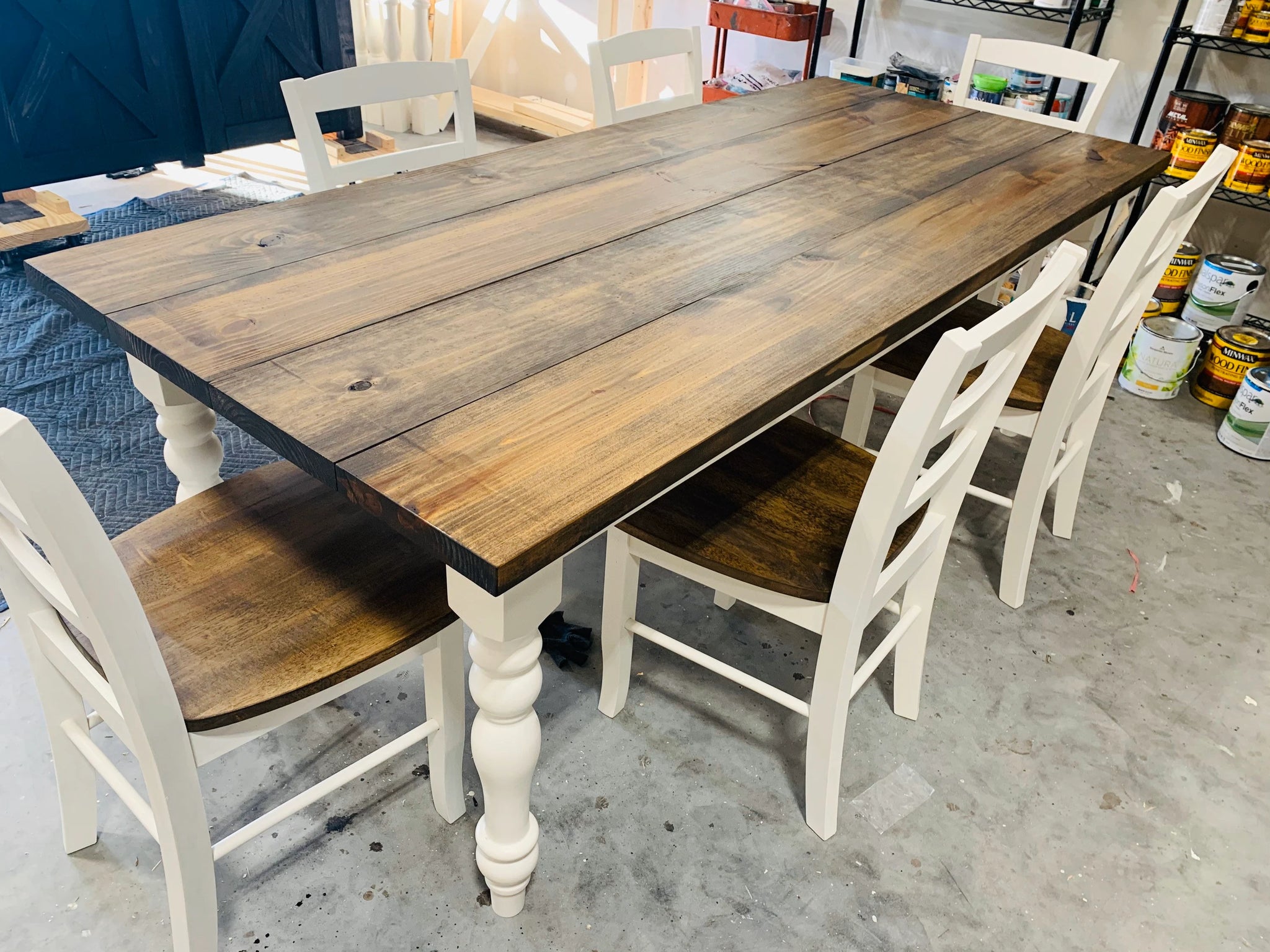Locate Timeless Elegance in Handcrafted Dining Table Legs Wood Selections
Locate Timeless Elegance in Handcrafted Dining Table Legs Wood Selections
Blog Article
Trick Variables to Keep in Mind for Eating Table Legs Wood Choices
When selecting wood for eating table legs, several important aspects require mindful consideration to guarantee both performance and aesthetic allure. The option of wood kind, defined by its sturdiness and special grain patterns, plays a crucial function in the overall layout and longevity of the piece.
Wood Kind and Features
When picking timber for dining table legs, it is vital to understand the one-of-a-kind characteristics of various timber types. Various timbers provide distinctive benefits and disadvantages, influencing both the toughness and visual allure of the ended up item.
Oak, understood for its excellent toughness, also features a prominent grain that can include character to the table. Cherry timber, with its abundant shade that grows over time, supplies a glamorous look yet might call for even more upkeep to protect against scratches.
On the other hand, softwoods like want and fir are extra inexpensive and much easier to collaborate with, yet they are less resilient than woods. Pine is lightweight and features a warm, rustic look, making it a popular option for informal eating settings. It is extra prone to damages and scrapes.
Comprehending these qualities will certainly assist in making an informed decision to make sure the legs of the table fulfill both practical and visual demands.
Grain Patterns and Looks
The wood's grain is not simply a visual quality; it imparts an unique individuality and charm to each item. Different timber types exhibit unique grain patterns, varying from the straight lines of maple to the complex swirls of oak and the striking number of walnut.
Moreover, the positioning and range of the grain can influence the regarded dimension and beauty of the table. Bigger, more pronounced grains might offer a vibrant, remarkable effect, while finer, subtler grains can produce a fine-tuned, understated appearance. Additionally, the completing procedure can further boost these patterns, emphasizing the natural elegance of the timber and drawing out abundant hues.
Inevitably, the selection of grain pattern should harmonize with various other style aspects, such as the table top and surrounding furnishings, making certain a cohesive visual that raises the dining experience. Thoughtful selection of wood grain not just adds to the table's charm yet likewise shows the owner's taste and design.
Longevity and Toughness
The resilience and stamina of dining table legs are critical considerations for making sure durability and security in any eating room. Choosing the best timber is vital, as different types show differing levels of resilience.

Eventually, buying premium timber and robust building and construction methods will certainly generate an eating table that stands the test of time, while supplying a reputable structure for plenty of meals shared amongst friends and family. Prioritizing resilience and stamina makes sure that your table continues to be useful and visually pleasing for several years to find.
Maintenance and Treatment
Proper maintenance and care are vital for preserving the toughness and stamina of dining table legs made from timber. Routine cleansing is vital; utilizing a soft, moist towel guarantees that dust and like it debris do not gather, which can lead to scratches and dullness. It is suggested to stay clear of extreme chemicals or rough products that might damage the surface.
Additionally, using a suitable wood polish or wax periodically can assist maintain the shine and protect the timber from dampness and spills. However, it is essential to adhere to the producer's recommendations relating to the kind of item to make use of, as particular coatings might respond detrimentally to certain chemicals.
Moisture and temperature variations can also impact wooden table legs, triggering them to warp or fracture. It's finest to position the table far from straight sunshine and warmth sources. If the table legs have any type of damages or scratches, resolving these immediately can prevent further damages.
Lastly, occasionally evaluating the joints and screws for tightness is very important to preserve structural integrity (Dining Table Legs Wood). By adhering to these maintenance methods, house owners can guarantee their wooden table legs continue to be attractive and functional for several years ahead
Ecological Considerations
When picking wood for eating table legs, it's important to take environmental considerations right into account. The sourcing and sustainability of timber are paramount in minimizing ecological effect. Opting for wood from licensed sources, such as those endorsed by the Woodland Stewardship Council (FSC), makes certain that the wood is harvested properly, advertising woodland preservation and biodiversity.

Additionally, regional sourcing of timber decreases transportation discharges, supporting local economic climates while minimizing environmental influence. It is additionally suggested to be familiar with the timber's therapy and ending up processes, as certain chemicals can be hazardous to both human health and the environment. By look at more info prioritizing sustainable wood choices, consumers can add to environmental preservation while delighting in the longevity and elegance of their table legs.
Verdict
In final like this thought, selecting timber for eating table legs necessitates mindful factor to consider of different variables, including wood kinds, grain patterns, and longevity. Maintenance demands and ecological sustainability additional impact timber selections, stressing the importance of sourcing from licensed or recovered materials.
When choosing wood for dining table legs, a number of vital elements require mindful consideration to make certain both functionality and visual appeal.Appropriate maintenance and treatment are essential for maintaining the resilience and strength of eating table legs made from timber.When picking timber for eating table legs, it's crucial to take ecological considerations right into account. By focusing on sustainable timber options, consumers can add to ecological preservation while appreciating the durability and beauty of their dining table legs.
In conclusion, choosing timber for eating table legs requires careful factor to consider of various aspects, consisting of timber types, grain patterns, and sturdiness. Dining Table Legs Wood.
Report this page